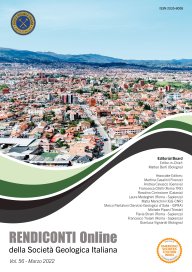
River network and alluvial events in the urban area of Naples (Italy)
Ettore Valente1 & Domenico Calcaterra1
1Department of Earth, Environment and Resources Science, University of Naples Federico II, via Cinthia 21, Naples (Italy).
Corresponding author e-mail: ettore.valente@unina.it
DOI: https://doi.org/10.3301/ROL.2022.04
Volume: 56/2022
Pages: 29-35
Abstract
The town of Naples experienced alluvial events even more frequently than volcanic ones. These events are testified by alluvial deposits preserved in the subsurface of the town. Unfortunately, the intense urbanization has diffusely masked the presence of river valleys, whose recognition and correct location plays a crucial role in urban planning strategies. To unravel this issue, a detail scale geomorphological and morphometrical analysis of the study area has been carried out by means of detail scale topographic maps and DTMs. The reconstructed river network features are strongly influenced by the topographic and geomorphological setting, with centripetal (on inner flank) and centrifugal (on outer flank) radial patterns in correspondence of the volcanic edifices of the Campi Flegrei caldera and a dendritic/radial pattern where the volcanic apron of the caldera is present. To the east of Naples, an isolated river is present, which is named the Sebeto River and that is also known as the "hidden river". Even if rivers are masked by urbanization, their presence is also testified by terms "arena", "cupa", "cavone" and "vallone", which are commonly used to indicate roads, streets and quarters placed in correspondence of the river valleys.
Keywords
Get Full Text